Student Profiles
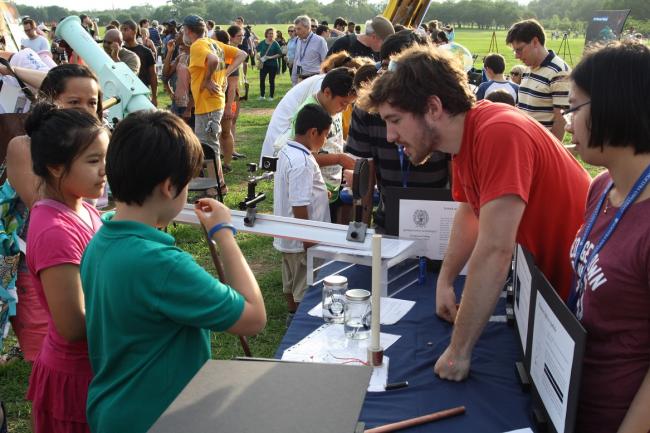
Welcome the Class of 2023!
Abhishek Bathina
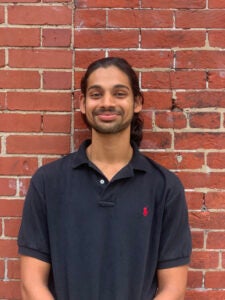
Abhishek graduated from Swarthmore college, majoring in Physics and Cognitive Science. His undergraduate research studied power laws and used them to describe jams and clogs in the dynamics of pedestrians in simulation. In addition to pursuing theoretical and computational research at Georgetown, he is also keen to further his teaching skills. He spent the last year teaching Math, Physics and Computer Science to high school students in Philadelphia. He maintains an active interest in studying languages, focusing on Mandarin and Arabic at college, and believes that language study has a deep connection to studying Physics.
Berkley Delmonico
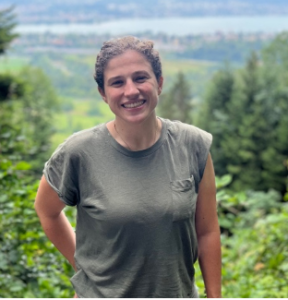
Berkley obtained her BS Honors degree in both Physics and Chemistry from the University of Connecticut with a minor in mathematics. Over the course of her undergraduate degree, she participated in theoretical and experimental applications of ultra-cold molecules. Here, she constructed a Lithrow configured external laser to cool and trap molecules of CH down to temperatures close to absolute kelvin to observe the particles quantum-mechanical properties. Subsequently, she conducted theoretical simulations to design perovskite solar cells for deep-space applications. Using time-dependent density-functional theory (TDDFT) to calculate the electronic stopping power. After finishing her Bachelor’s in May 2022, she analyzed data obtained from the WASA-at-COSY experiment in Julich, Germany. Here she conducted research to determine the double electromagnetic transition form factor of the 𝜋0 meson when it decays into two virtual photons. Berkley grew up just south of Boston where she found her passion for triathlons and her love for traveling.
Lucas Nelson
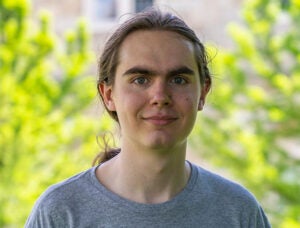
Lucas received his BA in Physics and Mathematics from Haverford College in Pennsylvania with a concentration in scientific computing. He spent his latter two years doing research in soft-matter physics, studying the structure and dynamics of 2D granular materials composed of non-convex C-shaped particles both in simulation and experiment. This research focused on the relationship between the shape of particles in granular materials and the bulk properties of those materials, and culminated in an undergraduate thesis titled “Multi-Scale Structure of SuperEllipse Sector Particles in a Rotating Drum.” At Georgetown, he is interested in exploring both hard and soft condensed matter physics, and looks forward to combining his mathematical background, computational skills, and experimental experience. Besides physics, Lucas enjoys reading books, singing, and playing tabletop and role-playing games.
Azka Rafey Khan

Azka completed her BS degree in Physics from Lahore University of Management Sciences (LUMS) in 2023. During her undergraduate studies, she researched materials, their heterojunctions, and their quantum properties. Her senior year thesis analyzed sustainable TMDC-perovskite heterojunctions, focusing on their unique properties and innovative fabrication techniques. Azka actively contributed as a research assistant during the summer of 2023 to advance this project at the LUMS Nanoscience and Solid State Labs. While her scientific pursuits have predominantly revolved around quantum materials employed in optoelectronic applications, she is keenly interested in broadening her knowledge to encompass soft matter materials, their distinct properties, and their applications within the medical domain. Besides physics, Azka finds fulfillment in expressing her creativity through the arts. She enjoys painting, crafting jewelry, reading books, watching films, and listening to music.
Rose Tchuenkam Batoum

I am Rose Tchuenkam, an international student from Cameroon and I graduated from Williams College this year with a bachelor’s in Physics. I was introduced to soft condensed matter in the Jensen research lab, where my first research project involved using high-speed imaging to study the leak-stop mechanism. With this work, we found that as a rivulet approaches spontaneous arrest, the final stabilizing droplet equilibrates as lightly-damped harmonic oscillators. Having enjoyed conducting academic soft matter projects, I wanted to explore soft matter research in an industrial setting. So, I worked as a research and development intern for Momentive Performance Materials, where I focused on conducting thixotropy tests to characterize the reversibility of bulk deformation in polymer gels using optical rheology. Finally this past year, I completed my thesis work investigating and measuring the rheological properties of Polydimethylsiloxane gels during curing and its effect on the contact mechanics of these materials using the Chasset-Thirion model. Joining Georgetown’s graduate physics is an incredible opportunity and I look forward to meeting and working with everyone.
Jason Tran
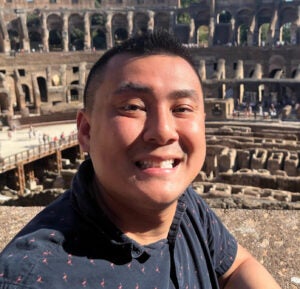
Jason received a double B.S. in Chemistry and Physics from Temple University, and received a M.S. in Chemistry with Physical Chemistry distinction and a M.Ed. In Curriculum and Instruction from the University of Maryland (UMD). Jason is returning back into the student seat after spending the last few years as a Chemistry and Physics teacher. His past research experiences focused in nonlinear optical spectroscopy, which started with a pump-probe experience designing and constructing a second-harmonic generation spectrometer to analyze coherent optical phonons in two-dimensional materials. This moved into a co-first authored paper “Fast reflective optic-based rotational anisotropy.” At UMD, he continued with optical spectroscopy through vibrational sum frequency with more journal articles which include, “The electrical-double layer revisited.” Jason’s current interests include condensed matter physics, optical physics, and physics education research. Out of research, Jason has interests in traveling, playing with his two adorable doggos, and musical theater. His main hobby is playing board and card games with his partner and is always down for a game night!
Carina Vazquez Nunez

Carina Vazquez is originally from Mexico City, Mexico. She received her Bachelor’s in Physics and Mathematics from Middle Tennessee State University in Murfreesboro, TN. During her time at MTSU, she conducted research in two fields – biophysics and acoustics. In acoustics, she studied the application of acoustic ring resonator structures for the manipulation of audio frequency acoustic waves demonstrated experimentally and via numerical simulation. The work was published in AIP Advances 12, 015006 (2022). These experiences have been crucial to her senior thesis, which focused on the study of the “Experimental Composition of Two Systems: Ring Resonator Structures and Y-Shaped Demultiplexer”, which was published in MTSU’s honors thesis library. In biophysics, she studied the post-ionization dynamics of chemo-treated and untreated 4T1 breast cancer cells ionized by laser trapping techniques. The work was published in Tomography 9, 9010007 (2023). In her down time, she enjoys listening to music on vinyl records, attending concerts, reading books, and exploring different cuisine options.
Students at various stages of the program
Daniel O’Brien, Class of 2017

The GU Physics department was a perfect fit for me; its interdisciplinary nature affords access to specialists in a range of fields. This expertise, when paired with state-of-the-art experimental facilities like GNuLab and ISM, means I have the ability to conduct advanced technological research. Lastly, our geographical placement in DC both brings in speakers and collaborators from government labs and offers access to plenty of “nature” just a few miles outside of town.
Luogen (Logan) Xu, Class of 2018

The physics graduate students here at Georgetown are a close-knit community. I get to discuss research ideas with fellow graduate students with great passion and hang out with them outside of work. During stressful times, they were great companies to have intellectually engaging and calming conversations with. The faculty here is welcoming and caring. They do fascinating research and they really love physics. As it turns out, coming here has been one of the best choices I made in my life!
Davonne Henry, Class of 2018
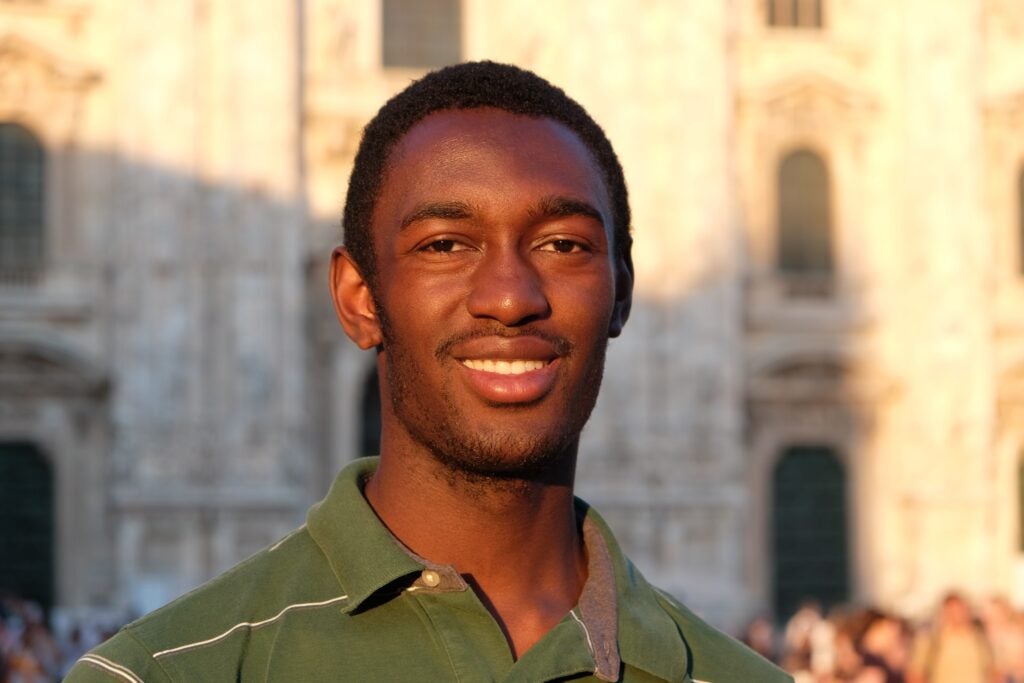
During my undergraduate work, I was not able to explore specialized Physics topics and engage in research as freely as I have been able to do at Georgetown. I have gotten to engage with experimental and theoretical collaborators and I have the opportunity to take advantage of diverse areas of expertise among the faculty and students. Outside of research, I have enjoyed the opportunity to have serious conversations within the department about our responsibility to build a diverse and inclusive STEM community.
